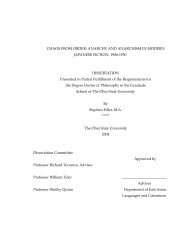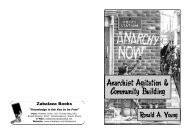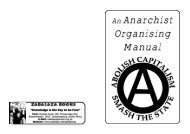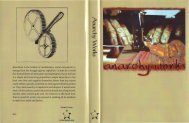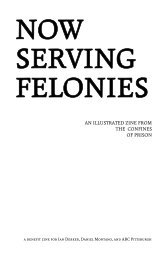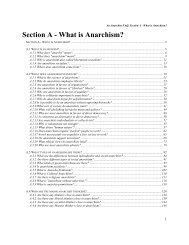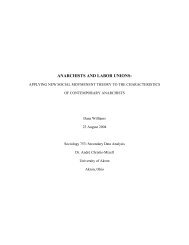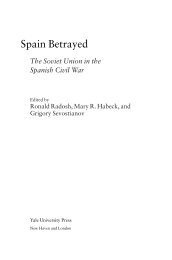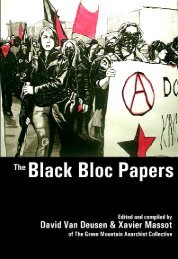Graham Gamblin - Infoshop.org
Graham Gamblin - Infoshop.org
Graham Gamblin - Infoshop.org
Create successful ePaper yourself
Turn your PDF publications into a flip-book with our unique Google optimized e-Paper software.
of insurrection and eventually, when this failed to produce results, terrorism? The fact<br />
of weakening the link with formal labour <strong>org</strong>anisations could allow some minds to<br />
look either to broader <strong>org</strong>anisations (insurrection), or small-group and individual acts<br />
(terrorism) as potentially revolutionary. Furthermore, as a more radical development<br />
in anarchism, there may simply have been an attraction to those who favoured more<br />
radical tactics.<br />
2. The Growth of Terrorism<br />
Despite the failure of the Benevento rising, it served to give impetus to the<br />
acceptance of propaganda by deed. Particularly enthusiastic was Paul Brousse, editor<br />
of L'Avant-garde. Brousse's interpretation of propaganda by deed however was<br />
broader than that of the Italians, and included such actions as demonstrations, and<br />
later even the destructivist vote (the election of illegal candidates) as propaganda<br />
methods. 51 The importance of this broader interpretation should be noted; insurrection<br />
involved the acting out of socialist aims by seizing the means of production and<br />
driving out the authorities, while other tactics served only to attract attention to the<br />
movement. Accepting this interpretation of propaganda by deed could feasibly<br />
(although not necessarily) open the way to small-group and individual acts, i.e.<br />
terrorism.<br />
Given the unlikelihood of fomenting an insurrection in Switzerland, and<br />
inspired by a demonstration in St. Petersburg in December 1876, Brousse proposed a<br />
workers' demonstration at Bern. He was joined in this by Kropotkin, who saw the<br />
need for some inspiring act to get the masses on the move. 52 However, differences<br />
soon became apparent between the two men. Brousse later declared that the purpose<br />
of the demonstration was to show the workers that they had no right to demonstrate in<br />
"free" Switzerland, where the display of the red flag was forbidden. Kropotkin on the<br />
other hand had wanted to show that "at least here and there the workers would not<br />
have their rights trampled underfoot and would offer resistance." Kropotkin clearly<br />
hoped for a serious confrontation with authority, and in fact tried to procure guns for<br />
the event. A few months later he took part in a smaller demonstration to which he<br />
50 Esenwein, op.cit. introduction p.8<br />
51 La propagande par le fait in Bulletin de la Fédération Jurassienne 5 aout 1877 pp.1-2<br />
52 Cahm, op.cit. p.99<br />
25



